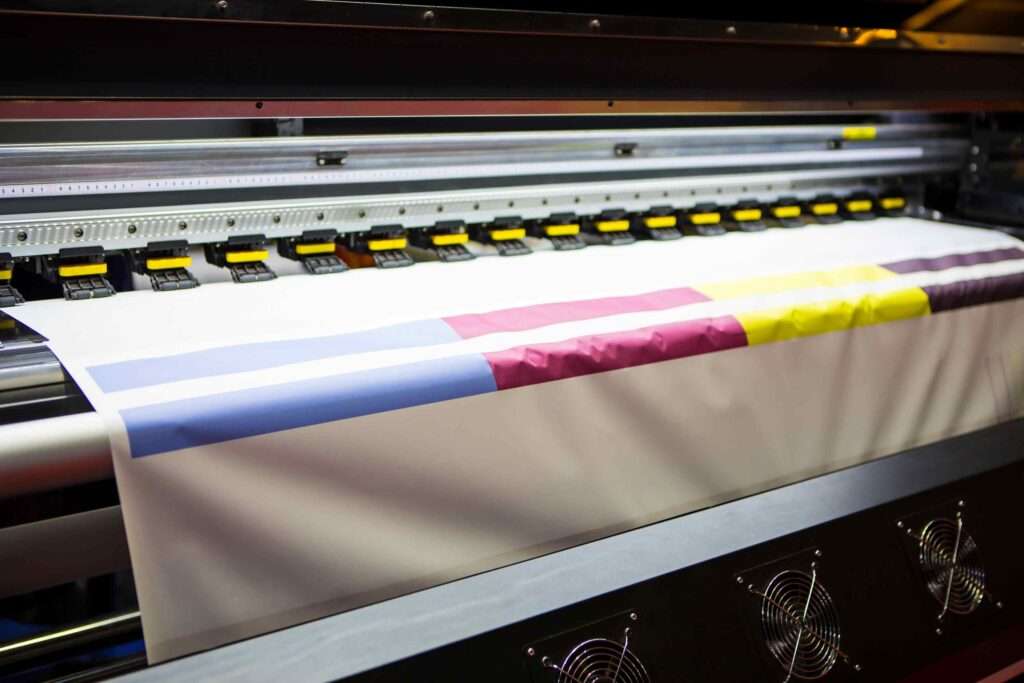

To understand the inner workings of sublimation printing, it’s essential to break down the process into its key steps:
The sublimation process begins with the creation of a digital image or design on a computer. This design can incorporate intricate details, gradients, and vibrant colors, making sublimation printing ideal for intricate and complex artwork.
We then print the design onto special sublimation transfer paper using sublimation ink. Sublimation ink changes from solid to gas when heated, skipping the liquid stage. Making it unique compared to normal ink.
We then move the design from the transfer paper onto materials like polyester fabric, ceramic, or coated metal. The heat press machine then applies heat and pressure. The ink on the paper transforms into a gas because of the heat and penetrates the surface of the material.
At this stage, the sublimation ink molecules bond with the polymer fibers in the material, creating a permanent and integrated image. As the material cools, the ink reverts to a solid state, ensuring that the image remains vivid and durable.
Once the material cools down, we carefully remove it from the heat press. The result is a high-resolution, full-color image that becomes an integral part of the material itself. This image won’t fade, peel, or wash out, making it ideal for a wide range of applications.
Vibrant and Detailed Prints: Sublimation printing produces very detailed and vibrant images, making it suitable for intricate designs and photographs.
Durability: The images created through sublimation printing are highly durable and resistant to fading, cracking, or peeling.
Versatility: Sublimation printing can be applied to a variety of materials, including textiles, ceramics, glass, and metal.
Sublimation printing is eco-friendly because it uses water-based inks. These inks are better for the environment compared to the solvent-based inks used in other printing methods.
Sublimation printing can print in full color without extra costs, making it affordable for both small and large print jobs.
Sublimation is limited to either 100% polyester fabric blends or fabric with a very high content of polyester. The lower the percentage of polyester in your fabric the more faded your final prints will be.
Sublimation may not be suitable for printing on natural materials such as cotton, silk, or leather. It works best with synthetic fibers.
Sublimation works well only on white or very light colors. Sublimation prints on dark or vivid colors can mix with the material colors. This can result in unexpected or poor prints.
Sublimation printing finds applications in various industries, including:
Apparel: Custom t-shirts, sports jerseys, and fashion wear.
Home Decor: Customized cushions, curtains, and wall art.
Promotional Products: Personalized mugs, mousepads, and keychains.
Sports and Fitness: Team uniforms, activewear, and accessories.
Signage and Displays: Trade show displays, banners, and flags.


